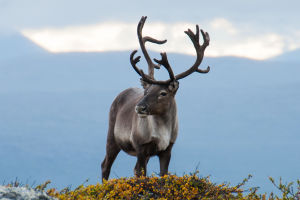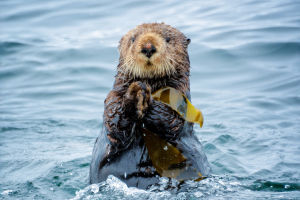Have you ever looked up at the autumn sky and watched birds flying in a perfect V-formation? Have you wondered where they're going, or why they travel such incredible distances year after year?
Bird migration is one of nature's greatest mysteries — and it continues to fascinate scientists and bird lovers alike. In this article, we'll explore why birds migrate, how they find their way, and what challenges they face along the journey.
Why Birds Migrate: The Search for Survival
Birds migrate primarily to find better conditions for food, breeding, and survival. Most birds move from colder regions with scarce resources to warmer areas where food is abundant and nesting is safer. For instance, Arctic terns travel from the Arctic to the Antarctic — a round-trip of over 40,000 miles — in search of optimal feeding grounds.
Seasonal changes in temperature, daylight, and insect availability also play a key role. Migration allows birds to take advantage of the best environments year-round, escaping harsh winters and returning north in spring to raise their young where there's less competition and more space.
Different Migration Patterns Around the World
Migration varies greatly among species. Some birds travel thousands of miles, while others may only move a few hundred. There are three main types of migration patterns:
• Latitudinal migration: Moving north to south and back again, like most songbirds and waterfowl.
• Altitudinal migration: Birds in mountainous regions move from higher elevations to lower valleys in winter.
• Partial migration: In some species, only part of the population migrates, depending on age, or local conditions.
One of the most impressive examples is the bar-tailed godwit, which holds the record for the longest non-stop flight — nearly 7,500 miles across the Pacific Ocean from Alaska to New Zealand.
How Do Birds Navigate?
One of the biggest puzzles in ornithology is how birds know where to go. They use a combination of navigation tools:
• The sun and stars: Birds use the position of the sun during the day and the stars at night to stay on course.
• Earth's magnetic field: Some birds have special cells containing magnetite that help them sense the Earth's magnetic field — like an internal compass.
• Landmarks and geography: Rivers, coastlines, and mountain ranges provide visual guides during flight.
• Smell and sound: Research suggests some birds even use smell or soundscapes to recognize familiar paths.
Young birds often migrate for the first time on their own, using instinct rather than learned routes, which is an extraordinary biological adaptation.
Challenges Faced During Migration
While migration is a natural process, it's also filled with risks. Birds face:
• Extreme weather such as storms, strong winds, or sudden temperature drops.
• Loss of stopover sites where they rest and feed during long journeys. These habitats are disappearing due to deforestation and urban development.
• Predators that wait along common migration routes.
• Exhaustion and starvation, especially when flying over oceans or deserts without food or water.
According to BirdLife International, many migratory bird populations are declining due to habitat loss, pollution, and climate-related changes.
The Role of Climate Change
Climate change is significantly impacting migration timing and routes. Warmer winters may delay departure, while early springs can cause birds to miss key breeding windows. According to a 2022 study published in Nature Climate Change, some species are migrating earlier each year by several days or even weeks.
This mismatch between migration timing and food availability can be harmful, especially for young birds relying on specific insect hatches.
Incredible Facts About Migration
• Hummingbirds can fly nonstop for over 500 miles across the Gulf of Mexico.
• Swallows return to the same nesting site year after year, sometimes even to the exact same structure or building.
• Blackpoll warblers, which weigh less than an ounce, migrate over 1,800 miles from Alaska to South America.
These feats are not only inspiring but show the delicate balance of biology, instinct, and environment.
Human Role in Protecting Migratory Birds
Fortunately, humans can help. Many countries have joined international agreements like the Convention on Migratory Species (CMS) to protect critical habitats. Conservation organizations work to preserve flyways, which are major routes birds follow across continents.
You can also make a difference locally:
• Protect trees and wetlands in your community.
• Avoid using pesticides that harm insects birds feed on.
• Keep cats indoors during migration seasons.
• Support bird-friendly buildings and reduce reflective glass, which causes fatal collisions.
Birdwatching and Citizen Science
Bird migration isn't just for scientists — birdwatchers and everyday nature lovers play a key role. Apps like eBird allow people around the world to log sightings and track migration patterns. These observations help scientists gather data on routes, population changes, and timing.
Participating in citizen science not only deepens your appreciation for nature but helps protect migratory species for the future.
Conclusion: The Sky Is Not the Limit
Bird migration is a wonder that connects continents, climates, and creatures across the globe. Each time birds take flight on their long journeys, they remind us of nature's resilience and intelligence. Their ability to find their way across thousands of miles — often against the odds — is one of the most beautiful stories in the animal world.
Have you witnessed bird migration where you live? What species have you spotted? Share your experiences, and let's celebrate the remarkable world of migrating birds together.


